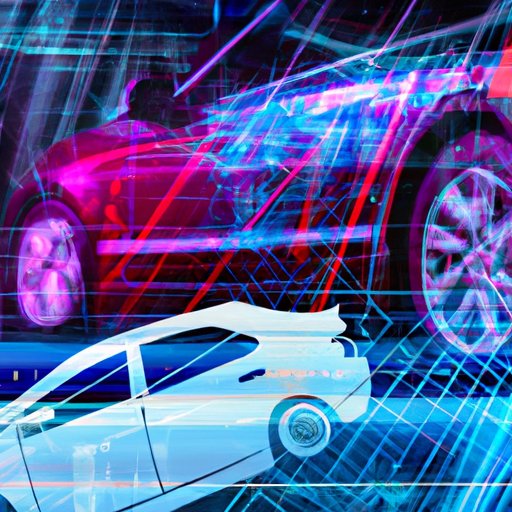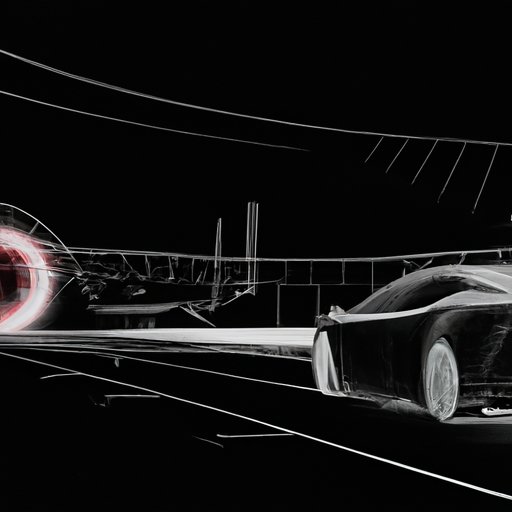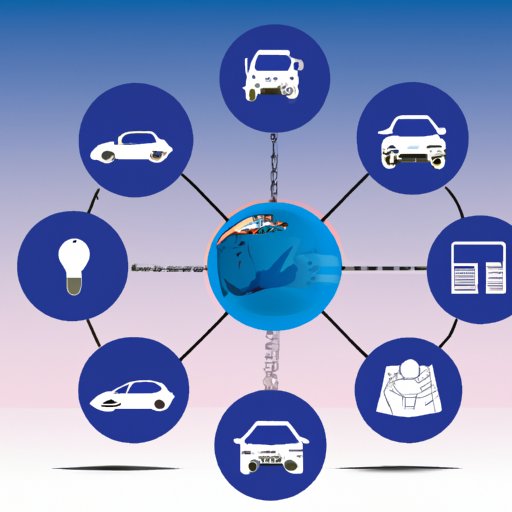Introduction
Automotive technology has been an integral part of the car industry for decades. It is a combination of mechanical, electrical, computer, and software engineering that is used to develop and improve the performance, safety, and efficiency of vehicles. Automotive technology is constantly evolving and improving, making it essential for drivers to stay up to date on the latest advancements.

The Rise of Automotive Technology
Automotive technology has changed the way we drive. From self-driving cars to advanced safety features, automotive technology has made driving safer and more efficient. According to a survey by AAA, nearly three-quarters of Americans are interested in self-driving cars. In addition, many automakers have begun to introduce advanced driver assistance systems (ADAS) such as lane-keeping assist, adaptive cruise control, and automatic emergency braking.
These features are designed to make driving easier and safer. They can help reduce the risk of accidents by alerting drivers to potential hazards and helping them maintain control of their vehicle. Over time, these features will become increasingly common in both new and used cars.
As automotive technology continues to evolve, so too will the ways in which cars are powered. Electric vehicles (EVs) are becoming increasingly popular due to their improved fuel economy and reduced emissions. Additionally, hybrid and plug-in hybrid vehicles offer drivers the ability to switch between electric and gasoline power.

A Look at the Future of Automotive Technology
The future of automotive technology is bright. In the coming years, automakers will continue to develop new technologies that will make cars smarter, safer, and more efficient. Autonomous driving is expected to become more commonplace, with fully self-driving cars expected to hit the roads within the next decade.
In addition, advances in battery technology and renewable energy sources will make electric vehicles more accessible and affordable. Connected cars will also become more widespread, allowing drivers to access real-time information about traffic conditions, fuel levels, and more. Finally, the emergence of 5G networks will enable faster data speeds and better connectivity, allowing cars to communicate with each other and their surroundings.
Understanding the Impact of Automotive Technology
Automotive technology has had a profound impact on the world. It has revolutionized the way we drive and allowed us to explore new places. It has also improved safety and efficiency, reducing the number of accidents and making travel easier and more enjoyable.
In addition, automotive technology has improved the environment by reducing emissions and improving fuel economy. According to a study by the International Energy Agency, EVs could reduce global CO2 emissions by up to one-third by 2050. As more people switch to electric vehicles, the environmental impacts of automotive technology will become even more pronounced.

Different Types of Automotive Technology
Automotive technology encompasses a wide range of different technologies, from traditional mechanical components to cutting-edge software and sensors. Some of the most common types of automotive technology include:
- Engine components: Engine components such as pistons, valves, and crankshafts are essential for powering a vehicle.
- Electrical systems: Electrical systems provide power to the vehicle’s lights, windows, and other accessories.
- Sensors: Sensors measure various aspects of the vehicle’s performance, such as speed, temperature, and acceleration.
- Software: Software is used to control the vehicle’s systems and provide drivers with information about their vehicle’s performance.
These components are essential for the proper functioning of a vehicle. Without them, a vehicle would not be able to operate safely or efficiently.
An Overview of Automotive Technology and its Applications
Automotive technology is used in a variety of applications, from manufacturing to racing. In manufacturing, automotive technology is used to create vehicles that are more efficient and reliable. Automotive technology is also used to improve the performance of race cars, with teams using advanced software and sensors to monitor and optimize their vehicles’ performance.
In addition, automotive technology is used to create autonomous vehicles. These vehicles use sensors, cameras, and artificial intelligence to navigate without a driver. Autonomous vehicles have the potential to revolutionize the transportation industry, making it safer and more efficient.
Conclusion
Automotive technology has come a long way in recent years. From self-driving cars to improved safety features, automotive technology has made driving safer and more efficient. In addition, automotive technology has improved the environment by reducing emissions and improving fuel economy. As automotive technology continues to evolve, it will play an even greater role in our lives.
Summary of Automotive Technology
Automotive technology is a combination of mechanical, electrical, computer, and software engineering that is used to develop and improve the performance, safety, and efficiency of vehicles. Automotive technology has changed the way we drive, with advanced driver assistance systems and electric vehicles becoming increasingly common. The future of automotive technology is bright, with autonomous driving and connected cars expected to become more commonplace.
Final Thoughts on Automotive Technology
Automotive technology has had a profound impact on the world. It has improved safety and efficiency, reducing the number of accidents and making travel easier and more enjoyable. In addition, automotive technology has improved the environment by reducing emissions and improving fuel economy. As automotive technology continues to evolve, it will become even more integral to our lives.
(Note: Is this article not meeting your expectations? Do you have knowledge or insights to share? Unlock new opportunities and expand your reach by joining our authors team. Click Registration to join us and share your expertise with our readers.)
